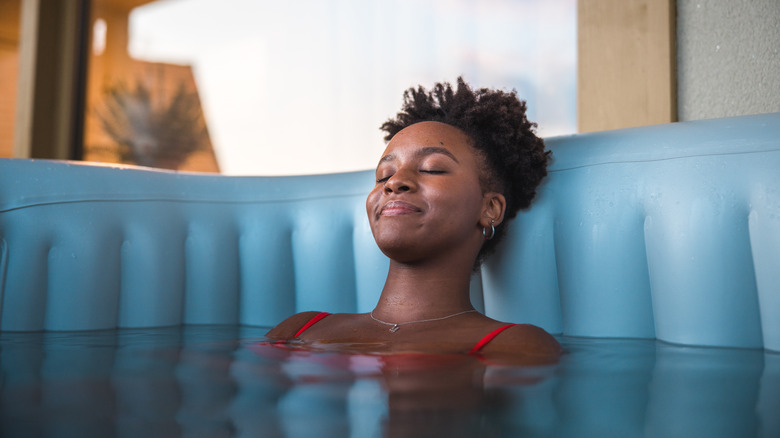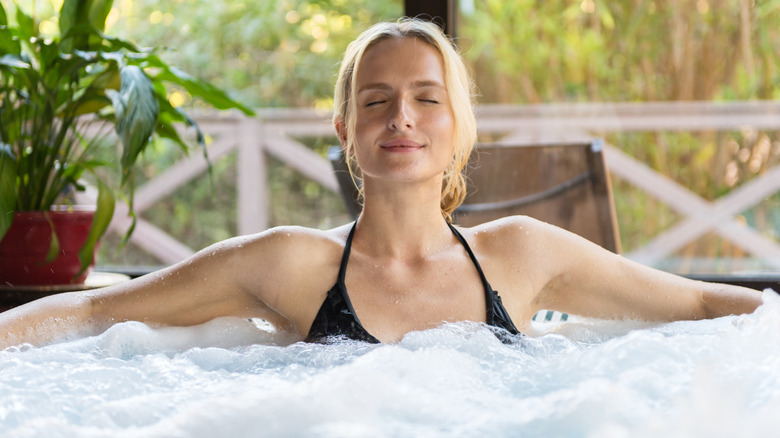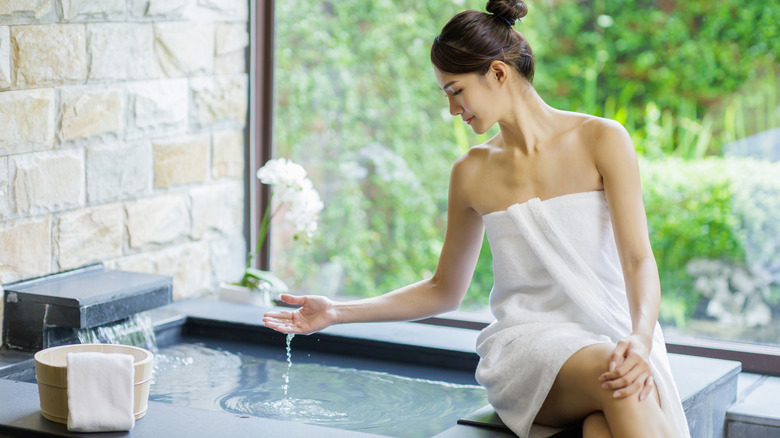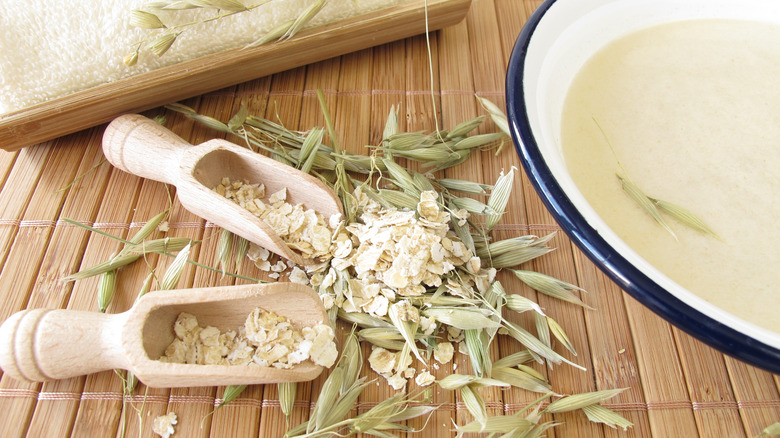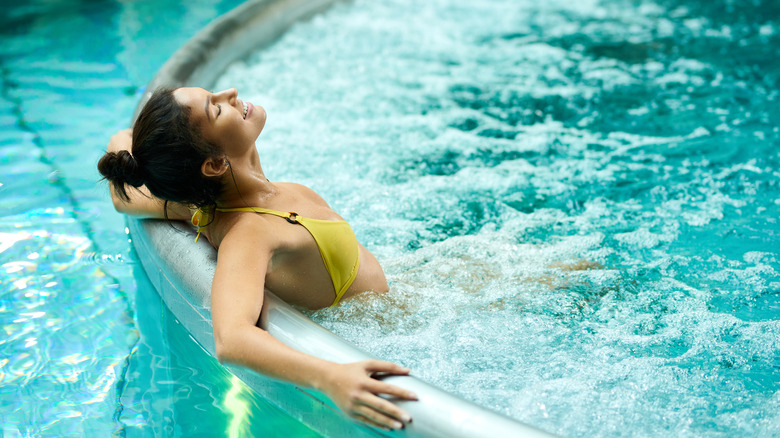Hydrotherapy: What Is It And How Can It Level Up Your Skincare?
The therapeutic properties of water have long been used to promote physical and mental well-being. It dates back as far as ancient Egyptian, Greek, and Roman times. Ancient civilizations in China and Japan used hydrotherapy in hot springs as a means of relaxation. However, as a more therapeutic method, hydrotherapy gradually found its way into modern times around the 19th century. According to the Bioregulatory Medical Institute, hydrotherapy as a movement was introduced by Father Sebastian Kneipp. During the mid-1800s Kneipp, assumed a position in the Bavarian area of Unterallgau, rich in thermal springs, and began experimenting with water therapy and its benefits. At the time, hydrotherapy was administered by doctors alone.
In present times, hydrotherapy involves using water in varying forms of pressure and temperature, including the addition of different elements such as salts and minerals, essential oils, and other ingredients that promote health and well-being. Currently, hydrotherapy is rapidly gaining ground as a favored skincare trend in 2023. According to a 2016 article in Journal of Advanced Pharmaceutical Technology and Research, hydrotherapy boasts many benefits ranging from enhanced circulation and detoxification to increased hydration, soothing irritated skin and improving skin tone.
Different hydrotherapy methods are used to treat acne, reduce inflammation, and soothe irritated skin. Hydrotherapy may also be beneficial in treating eczema (via Pierre Fabre Eczema Foundation.) Four of these methods include heated oxygen hydrotherapy, contrast hydrotherapy, oatmeal baths hydrotherapy, and thermal water hydrotherapy.
Heated oxygen hydrotherapy
Heated oxygen hydrotherapy uses heat, water, and infused oxygen nano-bubbles to create a spa experience. The addition of oxygen to the water helps moisturize and hydrate the skin (hence the popularity of oxygen facials).
Dermatology centers specializing in heated oxygen hydrotherapy do not use conventional jetted tubs. Rather they use oxygen-soak tubs that deliver high concentrations of oxygen in the water. In these specialized tubs, the pressurized mechanism regulates the steady emission of oxygen, ensuring its uniformity while you immerse yourself in the water and soak. This continual infusion of oxygen bubbles plays a pivotal role in maintaining a stable water temperature, courtesy of the thermal energy released by the oxygen molecules. A 2012 study in the Canadian Journal of Physiology and Pharmacology suggests that oxygen absorption by the skin increases when the skin is soaked in oxygen-infused water. This is particularly beneficial for treating skin diseases related to deficient blood supply to the skin.
While you can certainly opt to receive your heated oxygen hydrotherapy at a specialized center, several commercially available devices render this treatment suitable for at-home use. A 2013 study published in the International Journal of Cosmetic Science revealed that when dissolved in water, oxygen effectively reaches the skin surface and can be used to promote blood flow, improving skin health, even when used with commercial devices at home.
Contrast hydrotherapy
If you are battling acne, contrast bathing is an option for hydrotherapy treatment that will level up your skincare routine. Contrast hydrotherapy entails the alternating use of hot and cold water on the skin to help reduce inflammation and irritation caused by acne. According to Dermascope, this is achieved by unclogging the lymphatic system.
But how is this achieved? Hot water and cold water have opposite effects on the body. Whereas hot water increases blood flow to the surface of our skin, cold water sends blood to the core of the body. As hot and cold water are used interchangeably, blood vessels dilate and constrict. This can promote autophagy, which is the body's way of ridding itself of old, damaged cells and making way for new ones. Functional medicine doctor Frank Lipman, M.D., tells Well + Good, "Autophagy can be likened to a cellular fountain of youth, delivering an impressive array of preventative benefits protecting us from dysfunction and disease."
To try contrast hydrotherapy at home, you will need two tubs: one filled with hot and one filled with cold water. It's suggested to immerse your body in a tub filled with hot water between 95-113°F (35-45°C) followed by immersing your body in a tub filled with cold water 50-59°F (10-15°C). It is important to use a water thermometer to measure the exact temperature. Each immersion should last for one to three minutes, and you should repeat it for approximately 20 minutes, ending the cycle with cold water.
Oatmeal baths hydrotherapy
Several hydrotherapy treatments include the addition of ingredients to boost water's therapeutic properties. Immersing yourself in a hot tub infused with minerals, salts, or essential oils can help you take your at-home spa up a notch. One such beneficial ingredient is colloidal oatmeal, or oats that have been finely ground.
According to Healthline, oatmeal has anti-inflammatory properties, and can moisturize and soothe irritated skin. It's a safe treatment for several skin conditions, including eczema and psoriasis. Regarding colloidal oatmeal, board-certified dermatologist Dr. Kavita Mariwalla tells Today, "It is known to relieve itch and irritation and can soothe dry skin." A fellow of the American Academy of Dermatology Dr. Robert Anolik, weighs in, telling the outlet, "Oatmeal leaves behind moisturizing polysaccharides, as well as lubricating fats on the skin's surface. This creates a surface skin that's better hydrated and a restored skin barrier."
So how can you harness the power of oats and move them from your breakfast table to your bathtub? Here's one easy recipe to create your own colloidal oatmeal bath and create a skin-soothing regimen to invigorate your skin. All you need to do is grind rolled oats using a food processor. Ground oats easily dissolve in warm water and can be seamlessly incorporated into your nighttime bathtub ritual. Fill up your bathtub with warm (not hot) water and add up to one cup of colloidal oatmeal, soaking for up to 15 minutes.
Thermal water hydrotherapy
The benefits of thermal baths are undisputable. Thermal water comes from natural springs and, as such, contains minerals that are beneficial for our skin. Consultant to La Roche-Posay Dr. Joshua Zeichner tells Healthline, "It offers a variety of benefits on the skin, such as calming and anti-inflammatory effects."
The use of thermal water for treating various conditions is known as balneotherapy. Depending on the natural spring the water is derived from, different elements may be found in it. According to the National Park Service, spring water may contain carbonates and bicarbonates, chlorides, sulphates, iodites, and phosphates. Sulphates -– in particular iron and aluminum –- are powerful astringents and can help soothe irritated skin.
A 2020 article in the Journal of Medical Medicine indicates that thermal water hydrotherapy is effective in chronic skin disease management due to the water's chemical, immunological, and microbiological properties. Additionally, a 2018 paper in Clinics in Dermatology suggests that balneotherapy is efficacious in treating psoriasis and atopic dermatitis. Some studies suggest that thermal water can hydrate skin, per International Journal of Dermatology in 1999, and may reverse UV damage (according to a 2013 paper in Clinical, Cosmetic and Investigational Dermatology). Further, a 2018 study in Journal of Drugs in Dermatology suggests balneotherapy balances the healthy and unhealthy bacteria that naturally reside on the skin, leading to a healthier-looking appearance. For a DIY thermal water treatment, you can opt for skincare products, either in mist or spray form, or moisturizers that include water from natural springs as an active ingredient.
